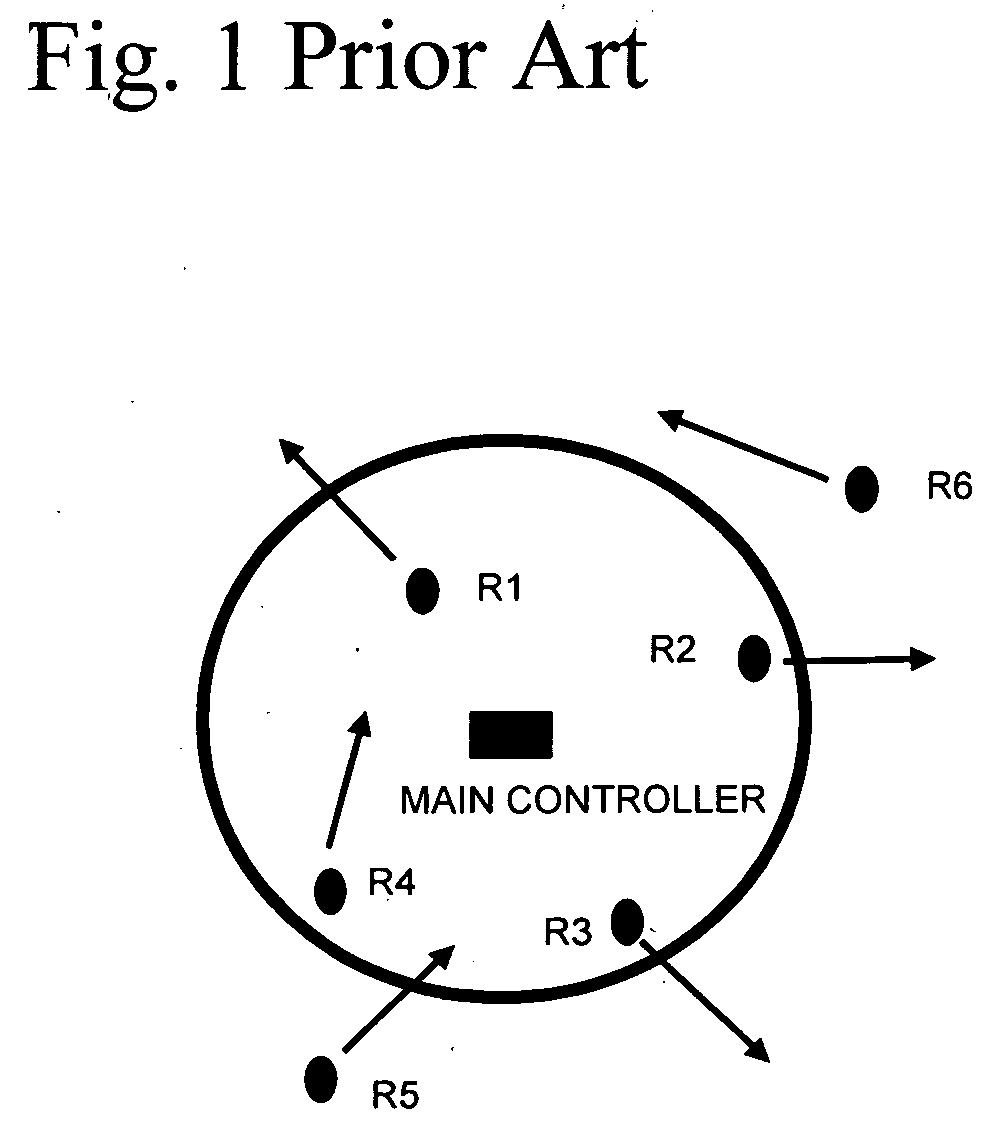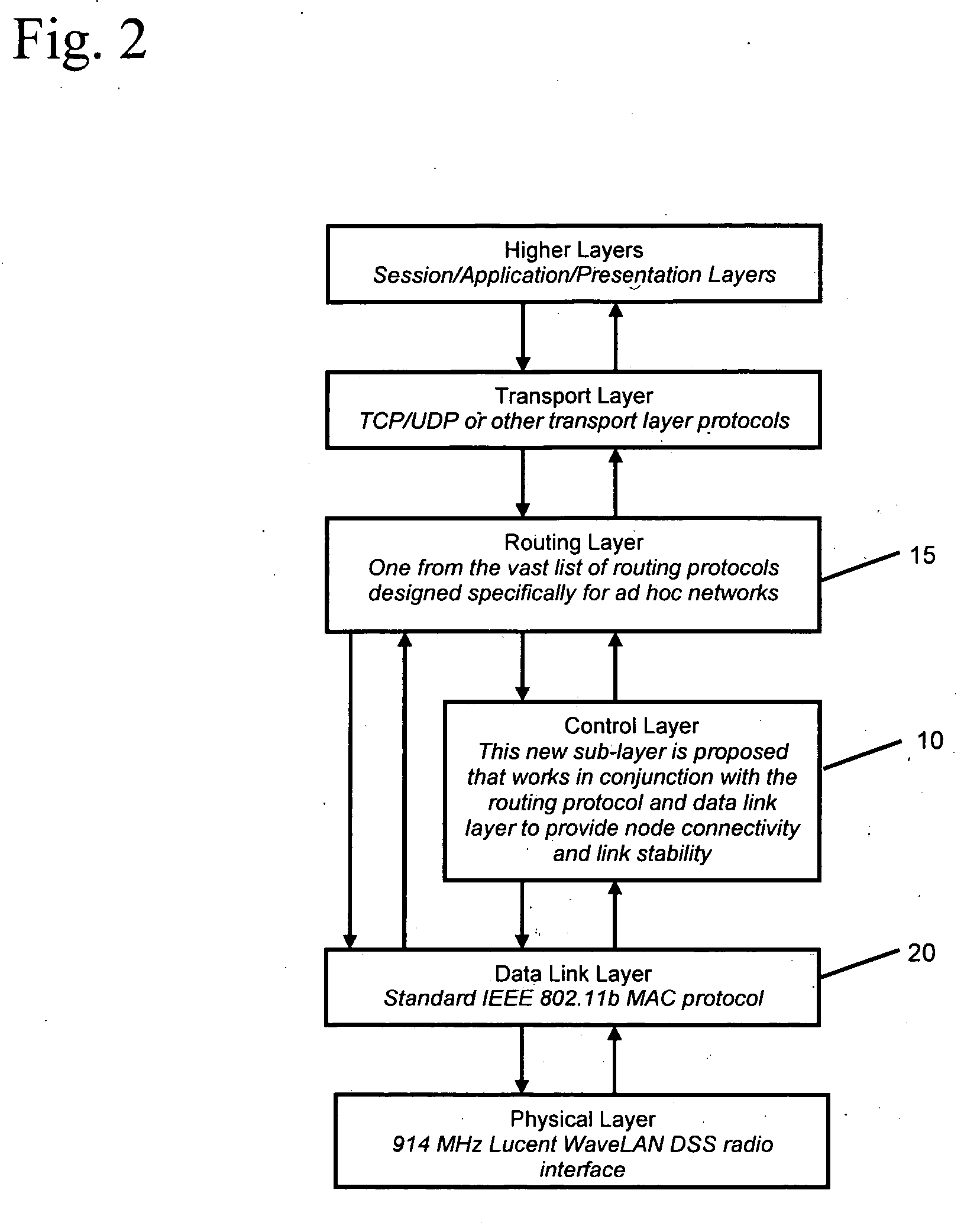A System and Method to Assure Node Connectivity in an Ad Hoc Network
a node connectivity and network technology, applied in data switching networks, high-level techniques, wireless commuication services, etc., can solve the problems of affecting the efficiency of human rescue teams, disaster sites are inherently unsafe, and impede mission success, so as to achieve the effect of reducing overhead and increasing the area of coverage and throughput in the network
- Summary
- Abstract
- Description
- Claims
- Application Information
AI Technical Summary
Benefits of technology
Problems solved by technology
Method used
Image
Examples
Embodiment Construction
[0054] The present invention provides a system and method for the exchange of control message among mobile nodes and a main controller and the ability to stop the mobility of the robots when their connections with the main controller, either directly or through another mobile node, are in danger of being lost. The decision to stop the mobility of a node is based on the signal strength and the energy level of the surrounding nodes.
[0055] With reference to FIG. 2, the present invention is implemented in a control layer 10 that operates between the network routing layer 15 and data link layers 20 to provide for node connectivity.
[0056] In a particular embodiment, the robots and the main controller are deployed at the same location at the start of a search and rescue operation. The main controller remains stationary throughout the entire operation and the robots begin to explore the disaster zone.
[0057] Referring to FIG. 3, which illustrates the flow diagram illustrating the logic at...
PUM
 Login to View More
Login to View More Abstract
Description
Claims
Application Information
 Login to View More
Login to View More - R&D
- Intellectual Property
- Life Sciences
- Materials
- Tech Scout
- Unparalleled Data Quality
- Higher Quality Content
- 60% Fewer Hallucinations
Browse by: Latest US Patents, China's latest patents, Technical Efficacy Thesaurus, Application Domain, Technology Topic, Popular Technical Reports.
© 2025 PatSnap. All rights reserved.Legal|Privacy policy|Modern Slavery Act Transparency Statement|Sitemap|About US| Contact US: help@patsnap.com



